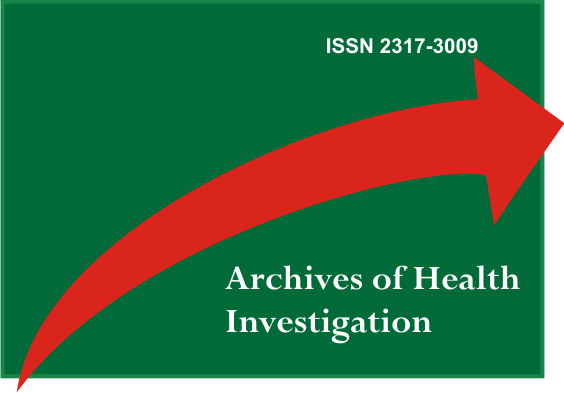Visão contemporânea sobre pinos anatômicos
Resumen
Como alternativa para melhorar a adaptação de pinos pré-fabricados em canais alargados e raízes fragilizadas, tem-se optado pelo reembasamento do pino pré-fabricado, conhecida como técnica do pino anatômico. Essa técnica, que pode ser realizada com resina composta, aumenta a adaptação do pino às paredes do canal e diminui a linha de cimentação, fazendo com que a retenção do pino seja menos dependente das propriedades mecânicas do agente de cimentação. O presente artigo tem como objetivo fornecer uma visão geral sobre pinos anatômicos, especificamente nas últimas duas décadas, baseada em estudos extraídos das bases de dados Scielo, Scopus e Pubmed, consultando os seguintes termos do MeSH Data Base: custom made fiber post, indirect glass fiber posts, root canal therapy e post and core tecnique. De acordo com a revisão de literatura realizada neste artigo, pode-se concluir que esta técnica tem sido utilizada por diversos autores e tem se mostrado eficiente e promissora, pois cria um retentor individualizado, com melhor adaptação, embricamento mecânico e diminuição da linha de cimentação.Descritores: Pinos Dentários; Cimentação; Teste de Materiais.
Descargas
Citas
Friedler AP, Leinfelder K. The clinical application of a new post. Dentistry Today. 1999; 18(3):84-5.
Dietschi D, Romelli M, Goretti A. Adaptation of adhesive post and cores after fatigue testing. Int J Prosthodont. 1997; 10(6):498-507.
Akgungor G, Akkayan B. Influence of dentin bonding agents and polymerization modes on the bond strength between translucent fiber posts and three dentin regions within a post space. J Prosthet Dent. 2006; 95(5): 368-378.
Asmussen E, Peutzfeldt A, Sahafi A. Finite element analysis of stresses in endodontically treated, dowel restored teeth. J Prosthet Dent. 2005; 94(4):321-329.
Lassila LP, Tanner j, Le Bell AM, Narva K, Vallittu PK. Flexural properties of fiber reinforced root canal posts. Dent Mater J. 2004;20: 29-36.
Ferrari M, Vichi A, Garcia Godoy F. Clinical evaluation of fiber-reinforced epoxy resin posts and cast post and core. Am J Dent 2000; 13:15B-18B.
Clavijo VGR, Souza NC, Ferrarezi MA, Susin AH. Pinos anatômicos: uma nova perspectiva clínica. Rev Dental Press Estét. 2006; 3:110-130.
Clavijo VGR, Calixto LR, Monsano R, Kabbach W, de Andrade MF. Reabilitação de dentes tratados endodonticamente com pinos anatômicos indiretos de fibra de vidro. Rev Dental Press Estét. 2008;5(2):31-49.
Silva GR, Santos-Filho PC, Simamoto-Júnior PC, Martins LR, Mota AS, Soares CJ. Effect of Post Type and Restorative Techniques on the Strain and Fracture Resistance of Flared Incisor Roots. Braz Dent J. 2011; 22(3):230-7.
Lewinstein I, Grajower R. Root dentin hardness of endodontically treated teeth. J Endod. 1981; 7(9):421-422.
Rivera EM, Yamauchi M. Collagen cross-links of root-filled and normal teeth. JDent Res. 1990; 98:121.
Baratieri N, et al. Odontologia Restauradora – Fundamentos e Possibilidades. Livraria e editora Santos, 1ª Edição, 2001.
Stockton LW. Factors affecting retention of post systems: A literature review. J Prosthet Dent. 1999; 81:380-5.
Chan FW, Harcourt JR, Brockhurst PJ. The effect of post adaptation in the root canal on retention of posts cemented with various cements. Aust Dent J. 1993; 38(1): 39-45.
Kimmel SS. Restoration of endodontically treated tooth containing wide or flared canal. N Y State Dent J. 2000; 66: 36-40.
Grandini S, Sapio S, Simonetti M. Use of anatomic post and core for reconstructing an endodontically treated tooth: a case report. J Adhes Dent. 2003; 5(3):243-7.
Kumbuloglu O, Lassila LV, User A, Vallittu PK. A study of the physical and chemical properties of four resin composite luting cements. Int J Prosthodont. 2004;17(3):357-63.
Velmurugan N, Parameswaran A. Custom-made resin post and core. Oper Dent. 2004; 29(1):112-4.
Iglesia-Puig MA, Arellano-Cabornero A. Fiber-reinforced post and core adapted to a previous metal ceramic crown. J Prosthet Dent. 2004; 91(2):191-4.
Grandini S, Goracci C, Monticelli F, Borracchini A, Ferrari M. SEM evaluation of the cement layer thickness after luting two different posts. J Adhes Dent. 2005; 7(3):235-40.
Pedrosa-Filho CF. Influence of composite resin relining (anatomical pin) on the extrusion resistance of intraradicular fiberglass post. Thesis (Ph.D.). Faculty of Dentistry of Piracicaba, State University of Campinas, Brazil – UNICAMP – 2006.
Tanoue N, Nagano K, Shiodo H, Matsumura H. Application of a pre-impregnated fiber-reinforced composite in the fabrication of an indirect dowel-core. J Oral Sci. 2007; 49(2):179-82.
Chieffi N, Chersoni S, Papacchini F, Vano M, Goracci C, Davidson CL, Tay FR, Ferrari M. The effect of application sustained seating pressure on adhesive luting procedure. Dent Mater. 2007; 23(2):159-164.
Clavijo VGR et al. Reabilitação de dentes tratados endodonticamente com pinos anatômicos indiretos de fibra de vidro. R Dental Press Estét. 2008;5(2):31-49.
Clavijo VG, Reis JM, Kabbach W, Silva AL, Oliveira Junior OB, Andrade MF. Fracture strength of flared bovine roots restored with different intraradicular posts. J Appl Oral Sci. 2009;17(6):574-8.
Faria-e-Silva AL, Pedrosa-Filho C de F, Menezes M de S, Silveira DM, Martins LR. Effect of relining on fiber post retention to root canal. J Appl Oral Sci. 2009;17(6):600-4.
Macedo VC, Faria-e-Silva AL, Martins LR. Effect of cement type, relining procedure, and length of cementation on pull-out bond strength of fiber posts. Journal of Endodontics. 2010;36(9):1543-6.
Fonseca RB et al. Anatomic fiber posts, clinical technique and mechanical benefits – a case report. Dental Press Endod. 2011;1(3):71-8.
Naves LZ, Santana FR, Castro CG, Valdivia AD, Da Mota AS, Estrela C, et al. Surface treatment of glass fiber and carbon fiber posts: SEM characterization. Microsc Res Tech. 2011;74(2):1088-92.
Menezes MS, Queiroz EC, Soares PV, Faria-e-Silva AL, Soares CJ, Martins LR. Fiber post etching with hydrogen peroxide: effect of concentration and application time. J Endod. 2011;37(3):398-402.
Ranjithkumar S1, Velmurugan N, Roy A, Hemamalathi S. Comparative evaluation of the regional micro-push-out bond strength of custom-made resin post system with a prefabricated resin post: an in vitro study. Indian J Dent Res. 2012;23(4):484-9.
Constâncio ST et al. Pinos anatômicos: uma descrição da técnica e controle radiográfico após seis anos. Full Dent Sci. 2012;3(12):416-23.
Frydman G, Levatovsky S, Pilo R. Fiber reinforced composite posts: literature review. Refuat Hapeh Vehashinayim. 2013;30(3):6-14.
Idil Dikbas1 and Jale Tanalp. Review Article An Overview of Clinical Studies on Fiber Post Systems. The Scientific World Journal Volume 2013 (2013), Article ID 171380. http://dx.doi.org/10.1155/2013/171380.


